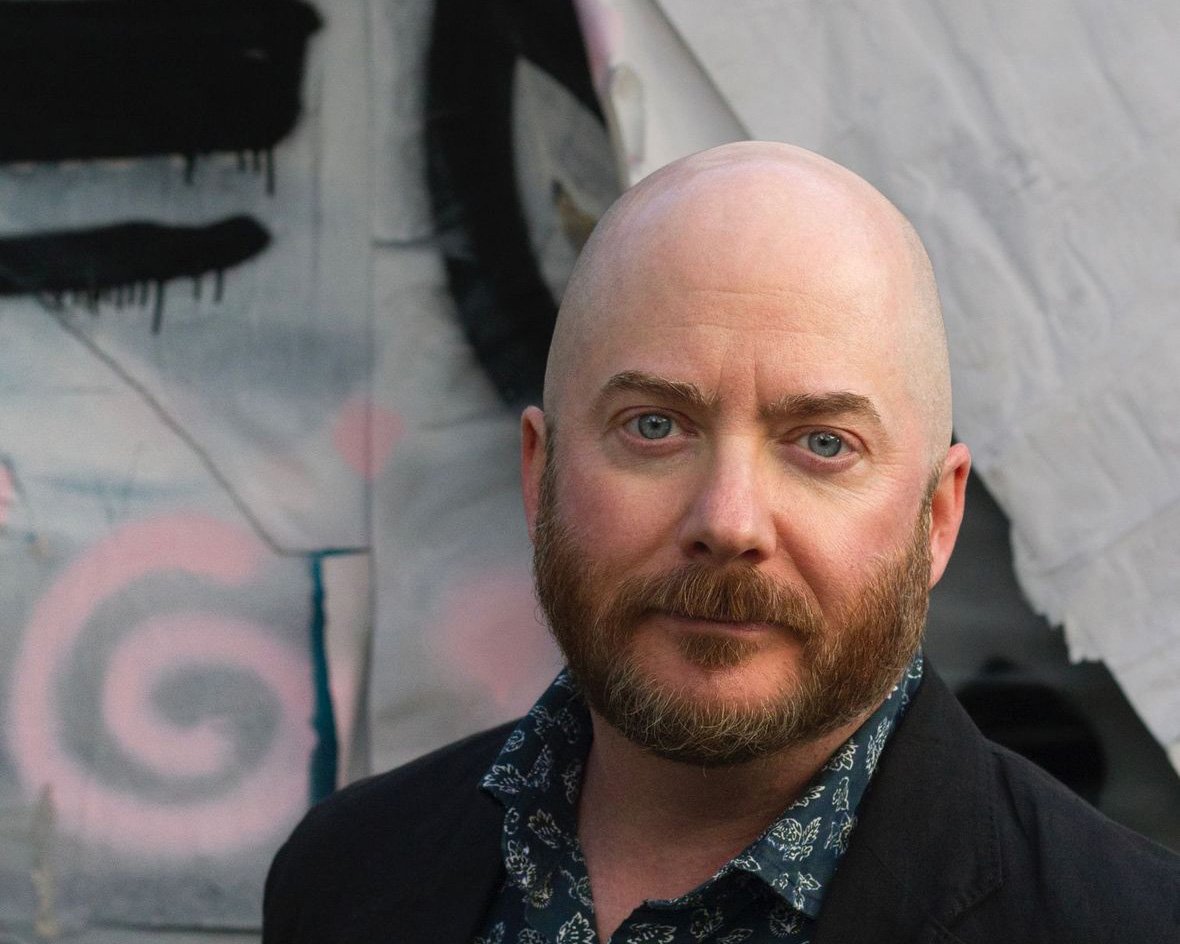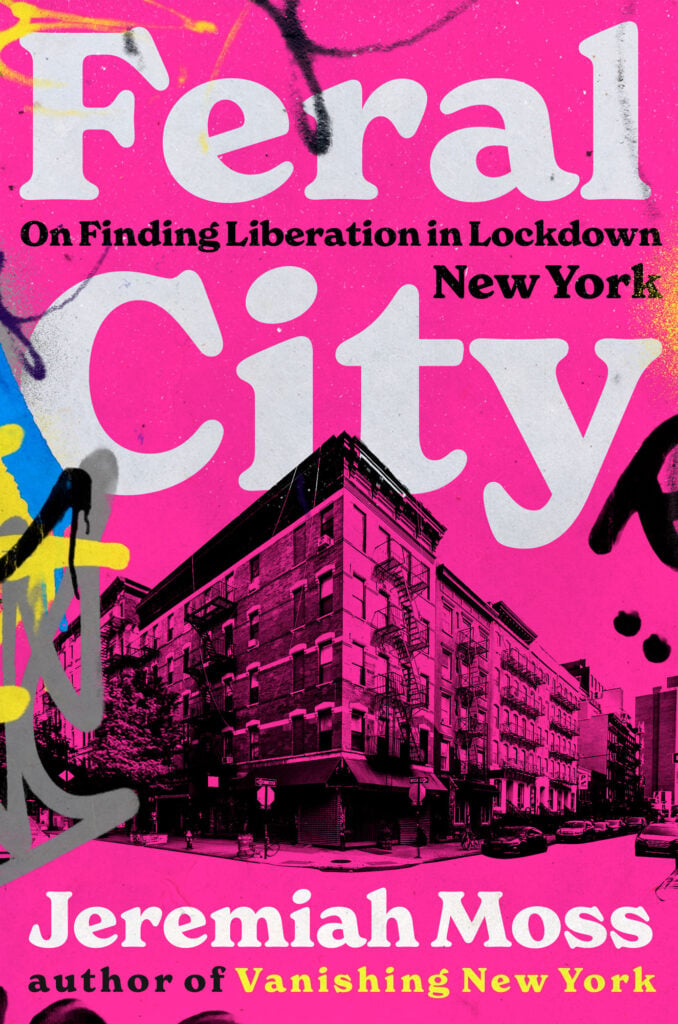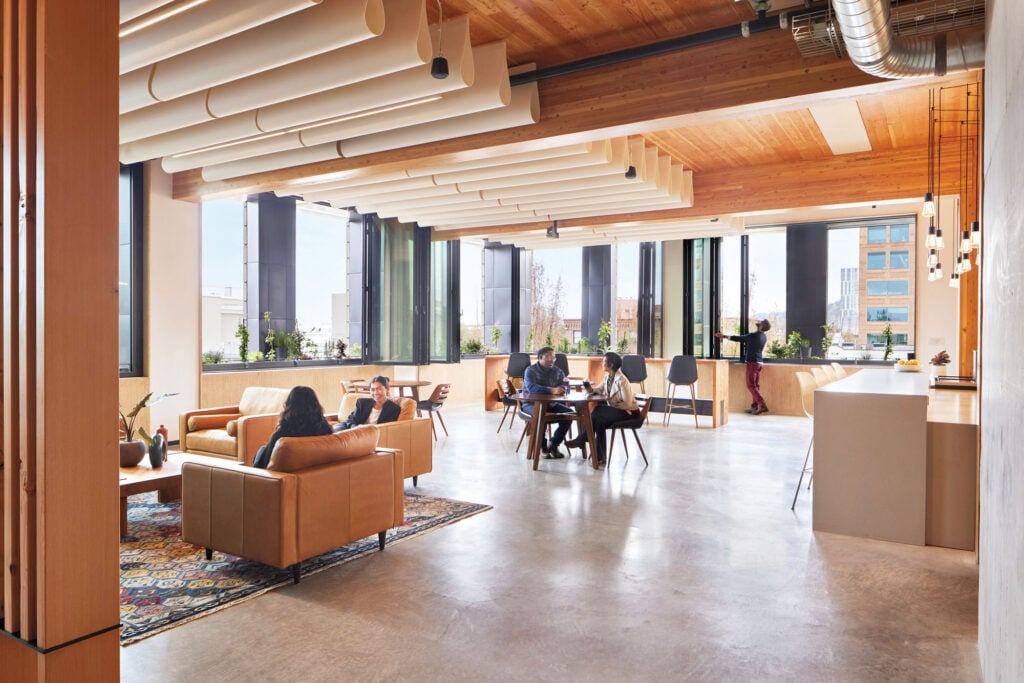
October 10, 2022
Jeremiah Moss Reflects on how Lockdown Brought a Temporary Sense of Freedom to New York City

Metropolis recently caught up with Moss, discussing the ways that the “New People” police urban space, why the spirit of the 1970s was alive during the first year of the pandemic, and how people can offer each other small moments of freedom in a city that’s quickly losing its wild edge once more.
Annie Howard: You talk a lot about the ways that “hypernormal” people police urban space, particularly when it comes to those with any signs of deviance. How have you experienced that feeling, both before the pandemic and with the return of that kind of population to the city that you document?
Jeremiah Moss: [The hypernormals] give a lot of dirty looks, a lot of disregard. Taking the eyes away, they won’t look at you, and just the way they take up space with their bodies, they come into the space, and they really elbow you out, and I think of all of that as policing behavior.
They dictate how you’re going to be in the space, which I feel in my body. I find myself walking and looking down a lot. I had to stop and go: what are you doing? Throughout lockdown, I walked with my head up and it was great: my chest was open, my head was up, I felt much more relaxed. Now when I’m walking, my body is constricted, and I have to remind myself to stop doing that. It’s this energy that has come back into the city.
[A different spirit is] right under the surface, that’s the thing. It was like lockdown started, and all of this [more hopeful] behavior started bubbling up instantly. As soon as you remove that policing force, and I am talking about the everyday normal people, not the police in uniform, as soon as they left [the city], it was like this other energy just exhaled, and that was in March of 2020, before the uprising. I think it started building from day one.
AH: One of the key political questions you raise in the book is the memory of New York in the 1970s, and the ways in which we can reclaim aspects of that moment in time. Why was that era so important to you?
JM: I’m often accused of romanticizing the ’70s, which I find kind of ridiculous. The ’70s came into the book because they just kept appearing everywhere. People were listening to music from the ’70s on rolling speakers and car stereos, people were wearing t-shirts with ’70s political slogans or logos, there was this good ’70s feeling in the air.
In the ’70s, there was this pivotal moment where progressive movements had a chance. The world had a chance to change in a positive direction, but because of the [right-wing] backlash and the beginning of neoliberalism—which first started in New York—that change never happened. In the pandemic, it felt like we had this sort of do-over possibility, to sort of almost return psychically to the good part of the ’70s, this possibility of taking a path towards a more connected or more mutually caring society. Could we go back to the future that didn’t get to be? It could have been from the ’70s, but didn’t get to be, and that was the feeling for me.
Thinking of the ’70s as this violent time, which it was, but how much of that violence was in response to state violence? I’m thinking of a collective psyche, that atmosphere, a busting open and a repression, and the tension between those two. I saw that happen day by day here in the spring and summer of 2021. Here comes this massive state repression, and all that free energy that was bubbling and fizzing suddenly is pushing up against it, and the result is this anger. Then what that becomes is the media and the police spin that into this demonization of the free city, and of course the 1970s must be demonized. People love to talk a lot about the romanticizing of the ’70s, but we don’t talk enough about the demonization of the ’70s.
AH: Even if so much of the open feeling that you capture from the early moments of the pandemic is unlikely to return anytime soon, what do you hope people can share with one another today in their cities in that same spirit?
JM: Everything is constructed to suppress deviants and revolution. I go back to that slogan that was around a lot, “Kill the cop in your head,” and how much work it is, but work worth doing, to be individually conscious of the cops in our heads, and when we need to kill them, and how we can also make space and signal to others on the streets.
There’s that moment where the city starts to renormalize, and I wanted to take off my buttons, but I left them on, and I feel self-conscious sometimes when I’m wearing them. But a trans person sees my trans flag button, and they say, “Oh, I like your pin.” It seems small, but it’s an act of connection, of being visible, and helping others to be visible, to see and be seen. That little action can open up a crack, and so much can come from that. I think we have to do those things for each other.
Would you like to comment on this article? Send your thoughts to: [email protected]
Latest
Projects
5 Buildings that Pushed Sustainable Design Forward in 2022
These schools and office buildings raised the bar for low-carbon design, employing strategies such as mass-timber construction, passive ventilation, and onsite renewable energy generation.
Projects
The Royal Park Canvas Hotel Pushes the Limits of Mass Timber
Mitsubishi Jisho Design has introduced a hybrid concrete and timber hotel to downtown Hokkaido.
Profiles
Meet the 4 New Design Talents Who Made a Mark This Year
From product design to landscape architecture and everything in between, these were the up-and-coming design practices making a splash in 2022.





